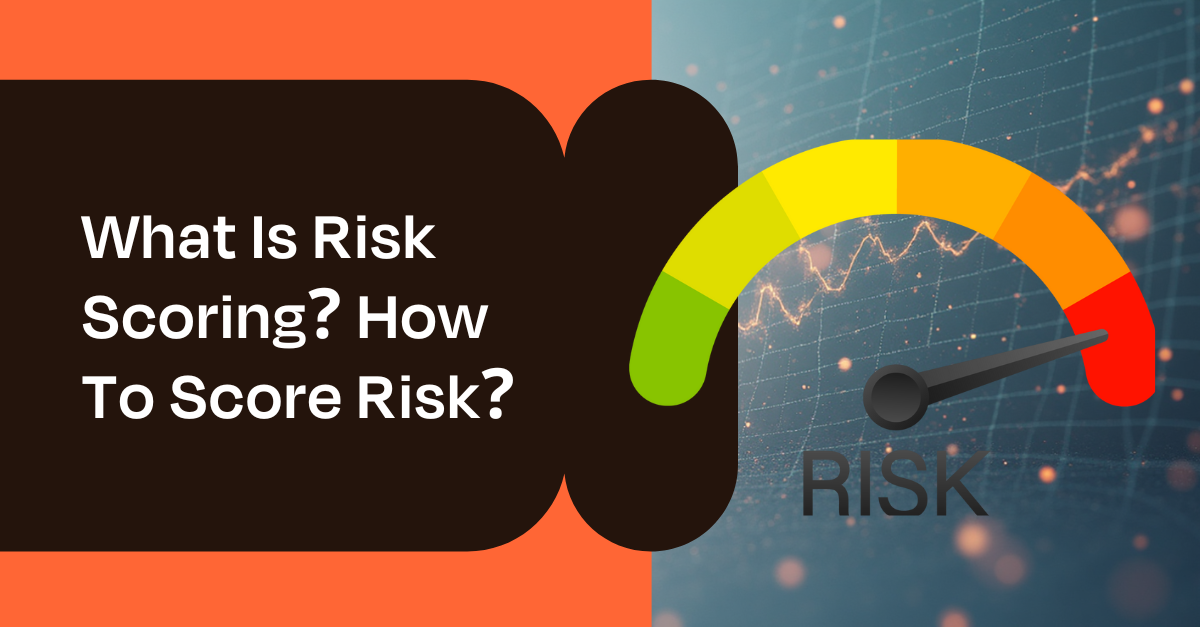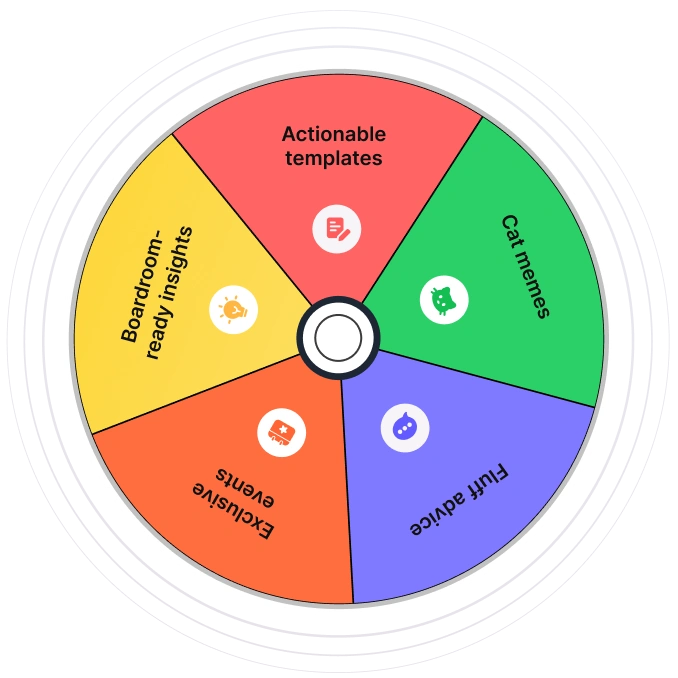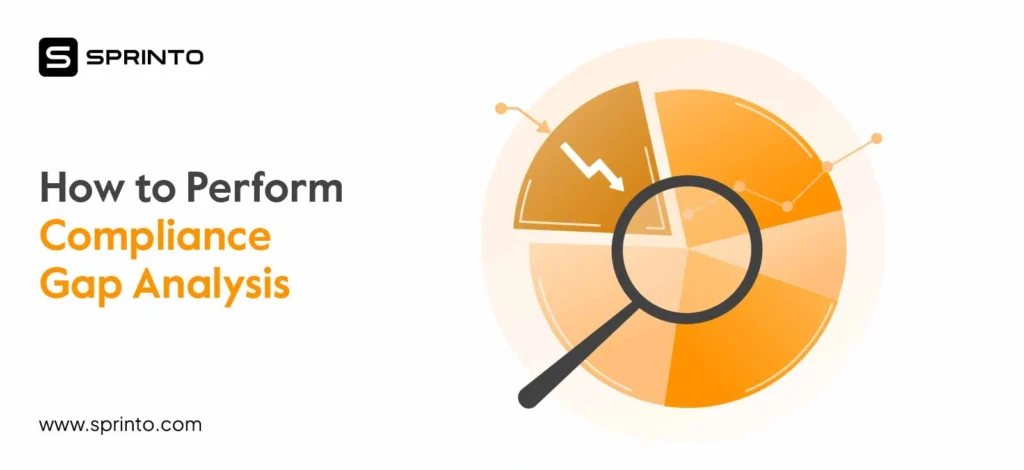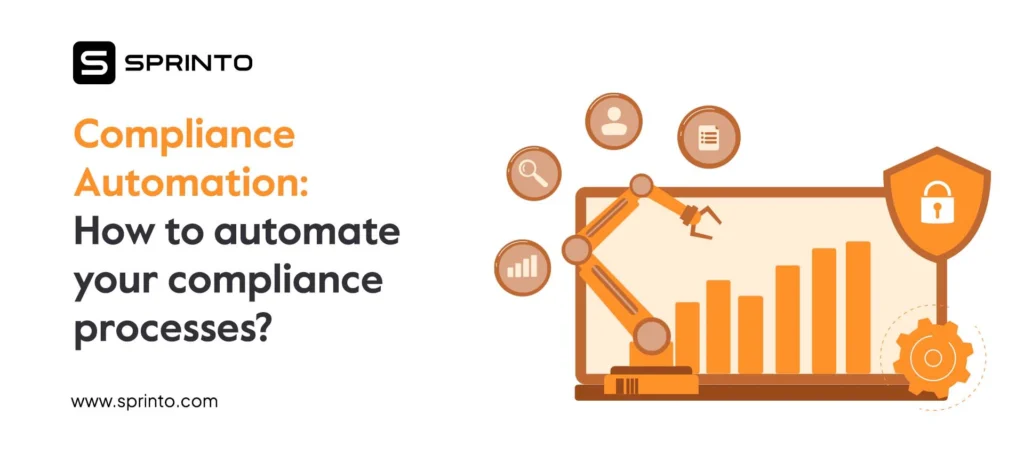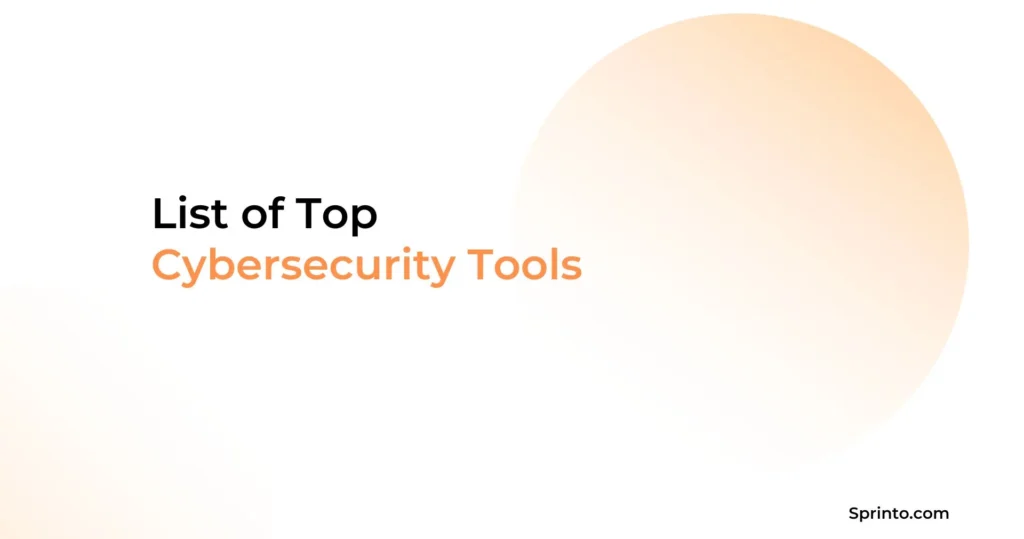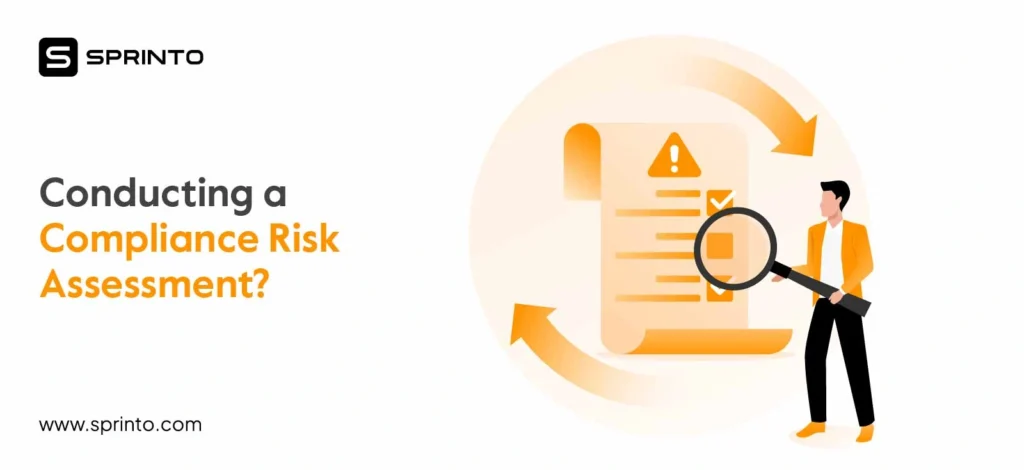Most security programs hit the same wall—risks pile up faster than the resources to fix them. But it gets even worse when “high risk” means five different things to five different stakeholders.
Without a shared way to compare one risk to another, prioritization becomes a debate instead of a decision.
Because when there’s a single “currency” for risk, backed by metrics like likelihood of occurrence and impact across assets, data, and vendors, it stops being guesswork. Instead, you get a score that stands up to scrutiny, directs resources where they matter most, and keeps work moving in the correct order.
This blog will cover the steps to build a risk scoring system that aligns your team and guides your attention where it matters most.
So let’s get started.
- Risk scoring turns ambiguity into action, converting scattered threat signals into clear numerical scores. This helps teams prioritize based on likelihood and business impact instead of noise or gut feel.
- What used to be slow, subjective, and checklist-driven is now automated, real-time, and data-driven with continuous monitoring, AI, and threat intelligence.
- Right-sizing risks is the real edge, because by categorizing risks into tiers (incidents, hygiene, programs, litter) and aligning stakeholders on a common “risk currency,” organizations can focus resources on what truly matters.
What is risk scoring?
Risk scoring turns disparate and ambiguous qualitative threat signals into clear numerical scores you can rank and act on. It’s calculated based on the likelihood of a threat materializing, the severity of its impact on the business, and the overall threat atmosphere.
With risk scoring, every risk gets a number to help teams prioritize risks and right-size their mitigation efforts. For example, a risk score of 9.2 can mean immediate action, whereas risk scores below five can be incorporated into simple hygiene mitigation routines.
The evolution of risk scoring: From manual to automation
Every security team aspires to rationalize risk management, stay ahead of threats, and focus only on what matters most. And that’s precisely what early attempts at risk scoring had promised. But historically, that promise was hard to keep. So far, risk scoring has been:
- Manual: Built on static checklists, spreadsheets, and expert intuition
- Sporadic: Risk assessments used to be quarterly, ad-hoc, or driven by audits
- Slow: Assessments took weeks or months, often going stale before action could be taken
- Subjective: “high risk” meant one thing to one team and something else entirely to another
This left organizations chasing noise instead of what truly mattered. As a result, threats went unnoticed until they did some damage.
But today, modern GRC tools like Sprinto leverage automation, AI, threat intelligence, and continuous monitoring so that risk scoring no longer involves guesswork. Instead, modern tools are forward-looking, precise, and constant.
Here’s how they have changed risk scoring and management:
- Continuous, real-time assessments: Risk posture is maintained and observed continuously. A failing control, an anomaly in configuration, or suspicious behavior in the network, everything is detected, analyzed, and flagged in real-time.
- Data-driven: Risk scores are calculated based on their likelihood of occurrence and the damage they can cause to the business. Not just on the CVE ratings and recommendations.
- Dynamic and responsive: Automated scans constantly look for public and proprietary threat reports to score new vulnerabilities as they come dynamically, flag suspicious activity, or detect third-party risk as they emerge (think a vendor failing their SOC 2 audit).
- Precise: Modern GRC platforms like Sprinto improve accuracy by combining advanced analytics, contextual signals, and threat intelligence.
- Shifts security left: With continuous control monitoring, automated threat detection, and automated alerts, security shifts from being a firefighting exercise to proactive defense, catching risks before they spiral out of control.
In other words, risk scoring has evolved from a subjective checklist to a living, data-driven system of record. Instead of debating risk, organizations can see it, measure it, and act on it—at the speed business demands.
How risk scoring works
Risk scoring works by assigning every risk an empirical value based on its likelihood of occurrence and the value of assets it can impact. In short, it’s about gauging the amount of damage it can cause. Based on that, teams can prioritize mitigation and right-size efforts.
Without a way to prioritize, everything feels urgent, leading to firefighting and wasted resources. Risk scoring fixes this by turning raw threat data into clear, actionable categories and ranking them by business impact and likelihood, so teams focus on what truly needs attention.
For that, you need to start visualizing threats regarding actual business impact and triage them against their likelihood of occurrence.
Here are typical metrics that you’d need to keep in mind while scoring risks:
- The threat vector: Analyze if it impacts the availability, confidentiality, or integrity of data, infrastructure, or the network
- Probability of risk materializing: Measure the probability that a threat vector will successfully exploit a weak system
- Likelihood of occurrence: You also want to check the probability of a particular threat occurring
- Total value of the impacted assets: It quantifies the damage that a risk can do when it materializes
When these values are considered in the calculation, organizations can truly grasp the scale of risks and discern which risks need immediate action, which ones can be accepted, and which ones can wait.
How to calculate risk score: The formula
The classic risk scoring formula revolves around the asset at risk and the likelihood of risk occurrence. So, to calculate risk, you need to identify vulnerable assets, calculate their value, and then calculate the likelihood of their exploitation.
Let’s discuss them in detail:
1. Identifying the assets
The first step is to examine your systems, which include data, infrastructure, physical assets, people, and cloud, as they are susceptible to external threats.
Once you have listed these assets, you must identify the threats that can impact them and to what extent. To do that, here are a few questions you can ask:
- What are the weaknesses in my hardware, cloud, code repos, or people management systems?
- Are the security protocols enough to protect these assets at risk?
- How safe are these assets from human risk (errors and malicious actions)
- What kind of threats are impacting what assets? Like threat actors can impact data and cloud infrastructure, natural disasters can impact physical assets and people, and insider attacks can compromise infrastructure and data.
In some cases, you might need to assess the financial impact of damage to get an accurate scale and extent of the risk.
2. Calculate the probability of risk events
Once you have identified the assets at risk, you need to calculate the probability of risks exploiting them.
For this, you will need to;
- Identify relevant threat vectors: List the actual “doors” attackers use in your world (phishing, insider misuse, supply-chain issues, unpatched software, misconfigured cloud/IAM). Prioritize the ones you’ve seen or your peers keep complaining about.
- Estimate vector likelihood: Consider historical data, like the last 12–24 months of internal incidents, industry reports, and threat intel, and identify the frequency of similar threat vectors. Don’t let one headline skew you.
- Assess exploitability per vector: Different types of vectors have different exploitability. For example, a phishing vector is more likely to result in an exploit when MFA is rarely used, but the likelihood of a zero-day exploit might be low.
- Factor in controls: See how well the current defenses hold up against these threat vectors.
- Aggregate probabilities: Roll up the likelihood across all vectors relevant to an asset to form an overall probability of compromise. Aggregating with the formula: P=1−((1−p1)×(1−p2)×(1−p3)×…)
- Where p1,p2,p3… = the individual probabilities of each attack vector (after controls)
- (1−pi) = the chance that the vector fails
- Evaluate threat frequency: See how often a threat has materialized in the wild. This can be found in industry data, threat intel feeds, or internal logs.
3. The formula for risk score
Keeping everything in mind, the formula for calculating the risk core then becomes the multiplication of the impact of risk by the likelihood of occurrence of that threat vector.
At its core, a risk score is nothing more than:
Risk Score = Impact × Likelihood
Where:
Impact = Value of damage to the asset, and Likelihood = probability of a threat materializing.
How to build and implement a risk scoring system?
Implementing a risk scoring system is the natural next step in scoring your risks. It’s about turning those risk scores into a structured, threat intelligence system that guides everyday security tasks, urgent vulnerabilities that need immediate attention, and lower-priority threats that can wait until they pose a real risk.
Here are the comprehensive steps to implement your risk scoring system:
1. Rationalize and right-size risks
For example, once you have identified your risks, the damage they can do, and their likelihood of occurrence, you can use the Five-box method to characterize them in different tiers of severity.
Here’s how you can use these quadrants to guide your risk scoring and management program:
- Incidents (High Likelihood × High Damage): These are the critical risks. They’re both very likely to happen and highly damaging if they do. They demand immediate attention and ongoing monitoring—think of them as red-alert situations.
- Hygiene: Think of risks in these quadrants as the ones that pop up frequently, but do not have the potential to disrupt the business. Yet, if they pile up, they can snowball into an incident. With time, these can be patched, monitored, and mitigated as routine hygiene security chores.
- Programs: These risks do not happen often, but when they do, they can damage the business. Patching or mitigating them is not a one-off activity but a long-term strategic initiative to bolster resilience against these threats. Think of it like a black swan event where your disaster recovery protocols, incident response policies, and insurance work in tandem to contain the damage.
- Litter: The lowest tier—unlikely, low-severity risks. They aren’t worth a significant investment, but you should keep them on the radar.
2. Train stakeholders
Once you have sorted your risks into different priority buckets, you must ensure that every stakeholder in the organization and your team can score risks and adhere to the priority guidelines.
For this:
- Conduct regular training sessions and get mutual buy-in from stakeholders for the risk scoring process
- Federate clear roles and accountability via training so risk scoring is a smooth, streamlined process, not a debate
- Roll out the system in phases so it has time to adapt to your organization’s unique circumstances
3. Continuously monitor your risk posture
Controls can deviate, new risks keep emerging, and resilience keeps drifting. Once you have defined the parameters of your risk management profile, it’s crucial to continuously monitor, review, and plug gaps to stay ahead of threats. Establish automated control monitoring systems to flag anomalies in real time. Update your policies to reflect the changing landscape and refine your processes to bolster resilience.
Internal vs External Risk Scores
Internal and external risk scores are two sides of the same coin, threat environment. However, one represents threats emerging within organizations due to failing controls, rogue actors, and vulnerable systems. The other emerges from external sources, from factors that are not usually under the organization’s control.
Here is how you can differentiate between the two while scoring:
Internal risks
It typically represents how vulnerable something is based on your environment, such as your organization’s physical and digital assets, identities, configurations, and controls.
It might include factors like:
- Asset criticality
- Data sensitivity
- Privilege policies
- Employee phishing awareness
- Misconfigurations in the cloud
- And the performance of mitigation controls
To reduce associated vulnerability, you can assess these individually to triage, patch, and segment. For example, you can block unrecognized access, harden servers, and implement MFA and IAM to bolster the resilience of your assets against external threats.
You can assign risk scores to the internal risk with this formula:
Internal risk score = f( Impact(asset) × Likelihood_internal(threat_vector, controls) )
Where the Likelihood is directly related to the performance of mitigation controls.
External risk scores
External risk scores map your exposure and attack surface to risks lurking in the wild. These are not threats emerging from inside due to a control failure or a rogue employee; they can exploit your business’s public-facing assets, such as your website, server endpoints, APIs, SaaS tenants, third parties, and more.
These can usually be mitigated with:
- Perimeter hardening
- Vendor due diligence
- Continuous monitoring and posture-tracking
Here’s a formula to calculate risk scores for external risks:
External risk = f( Exposure of assets(internet-facing) × Likelihood_external(threat_activity) )
Where you multiply the value of public-facing assets and the likelihood of threat vectors exploiting them.
Popular risk scoring methodologies
Every risk scoring methodology acts as a lens. If you change it, the same risks look bigger, smaller, or more urgent. This is why it’s essential to choose a risk methodology that determines the reality of your business. It determines what risks get prioritized and which ones get left on the back burner.
- Quantitative: These represent risk in complex numbers, leaving little room for debate and guesswork. They help align stakeholders and often get board-level buy-in when backed with solid data.
- Semi-Quantitative: It uses simple scoring scales (like low to high) to balance speed with structure. It’s simpler than full quant models, yet less vague than intuition.
- Asset-Based: This approach prioritizes based on the value of what’s being protected—data, infrastructure, or intellectual property.
- Process-Based: Evaluate risks tied to workflows and business operations. This approach helps spot weak links that may stall critical processes, not just individual assets.
- Vulnerability-based: It’s more tuned to highlight risks from unmatched systems and misconfigurations. For security teams, this insight is critical and pointed, bridging insight to action seamlessly.
Depending on the business’s unique circumstances, all of these models can be combined or worked on individually.
Best practices for effective risk scoring
Scoring risks isn’t just about assigning a number on the Excel sheet; it’s about right-sizing every risk so your resources are best utilized addressing the risks that matter and on the ones that don’t. Too often, teams get buried under checklists and scattered alerts. The real trick is keeping your process sharp, focused, and repeatable. Here’s how:
- See it before it strikes: Risks that stay invisible become disasters. Map out your threat vectors early, so nothing sneaks up on you.
- Don’t just score, right-size, rationalize, and prioritize: A big risk register can be paralyzing. Understand the landscape of your business, your development processes, and your attack surface, and then assess risks based on the impact and likelihood, so your team always knows what to fix, with what rigor, and when.
- Move away from a set-and-forget mindset: Firewalls, MFA, vendor checks—they all drift over time. Keep monitoring and testing, or yesterday’s defenses turn into today’s blind spots.
- Turn lessons into muscle memory: Every incident mitigated can be a lesson for future ones. Capture the insights, transform them into playbooks, distribute them org-wide, and ensure your next response is faster and smarter.
Because in the end, sound risk management isn’t about doing more—it’s about doing the right things, at the right time, before the risk chooses you.
Manage and track risk scores with precision
By this point, it’s clear: the real edge isn’t in spotting risks; it’s in right-sizing them. Sprinto lets you do exactly that—empirically, not by gut. Whether you frame your program around assets, processes, or external threats, Sprinto allows you to choose the lens that matches your organization’s priorities and still compare risks on a standard scale.
And once you’ve sized them, execution doesn’t lag. Sprinto’s automation enforces structure, tiered alerts, SLA-bound workflows, and contextual updates to keep remediation sharp and disciplined.
Here’s how Sprinto achieves this:
- A comprehensive risk library that helps identify and map threats to your assets, processes, and external vectors, right out of the box
- Auto-mapping of risks to compliance criteria and controls, with automated checks and monitoring to help you stay on top of them
- Triggers, contextual, and tiered alerts to the right risk owners to ensure timely resolution throughout the lifecycle of risks
- Industry-aligned benchmarks let you score risks by impact and likelihood, or you can fine-tune with your own business context
With Sprinto, your risk management program moves from scattered and reactive to confident, consistent, and systematic. This allows your teams to focus on managing threats, not chaos.
FAQs
1. What are the most common risk scoring models used in cybersecurity?
Most common risk scoring methodologies include quantitative assessments that score risk empirically, qualitative assessments that mark risks as high, medium, or low, asset-based risk management that focuses on the threat vectors that impact the assets with the highest value, and process-based risk scoring that assesses how business decisions impact risks.
2. How do I create a risk scoring framework for my organization?
To create a risk scoring framework for your organization, start by building a risk register, identifying the assets or processes you want to protect, and using publicly available threat intelligence and software-based monitoring to predict the likelihood of the threat vectors successfully breaching those assets. Once done, multiply the asset value by the likelihood of occurrence to start scoring risks.
3. How is risk scoring used in SOC 2 and ISO 27001 compliance?
SOC 2 and ISO 27001 expect periodic risk assessments, mitigation by appropriate controls, and continuous monitoring. ISO 27001 further requires risks to be clearly scored and distributed into different priority tiers.
4. What’s the role of risk scoring in vendor risk management?
Vendors can be the hidden weak spots where some handle sensitive data, others barely touch your core processes. Without a clear scoring system, you overburden low-risk partners or miss critical exposures. That’s where risk scoring helps – by ranking vendors on likelihood, impact, and criticality, you cut through the noise, tier them smartly, and focus due diligence where it matters most. It’s the difference between spreading yourself thin and managing vendor risk confidently.
5. How can risk scoring help prioritize remediation efforts?
The most challenging part of remediation is deciding what to fix when everything looks urgent. Risk scoring cuts through that chaos by showing which issues pose the highest likelihood and impact. Instead of chasing noisy alerts, you can rank risks, tackle the ones that threaten critical assets, and defer or accept the rest. It’s a way to turn endless firefighting into focused, high-value action.
Sucheth
Sucheth is a Content Marketer at Sprinto. He focuses on simplifying topics around compliance, risk, and governance to help companies build stronger, more resilient security programs.
Explore more
research & insights curated to help you earn a seat at the table.



